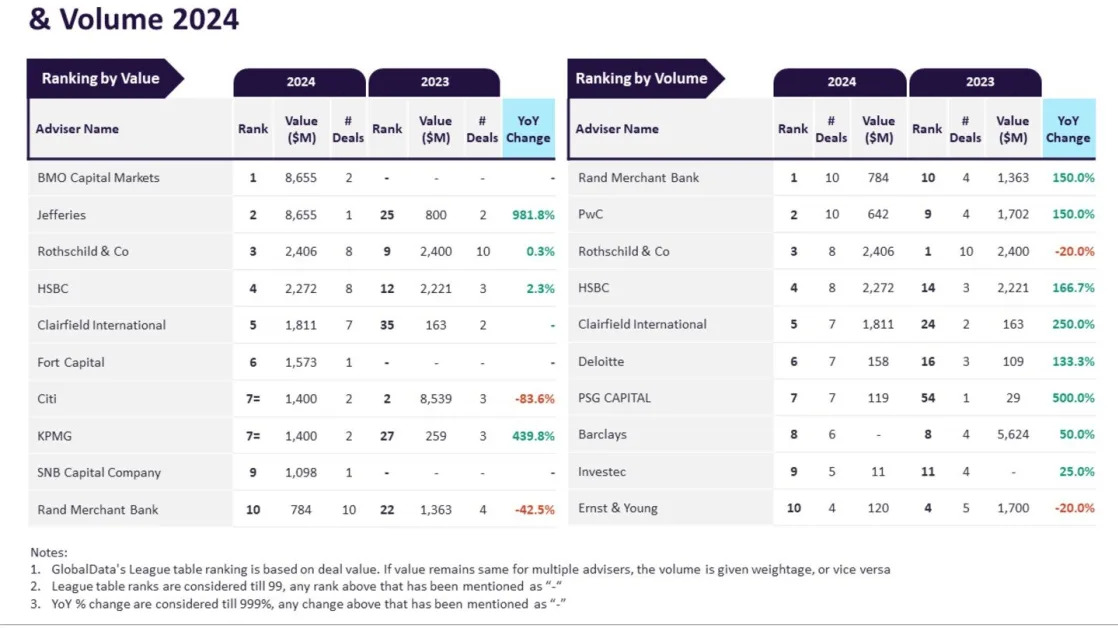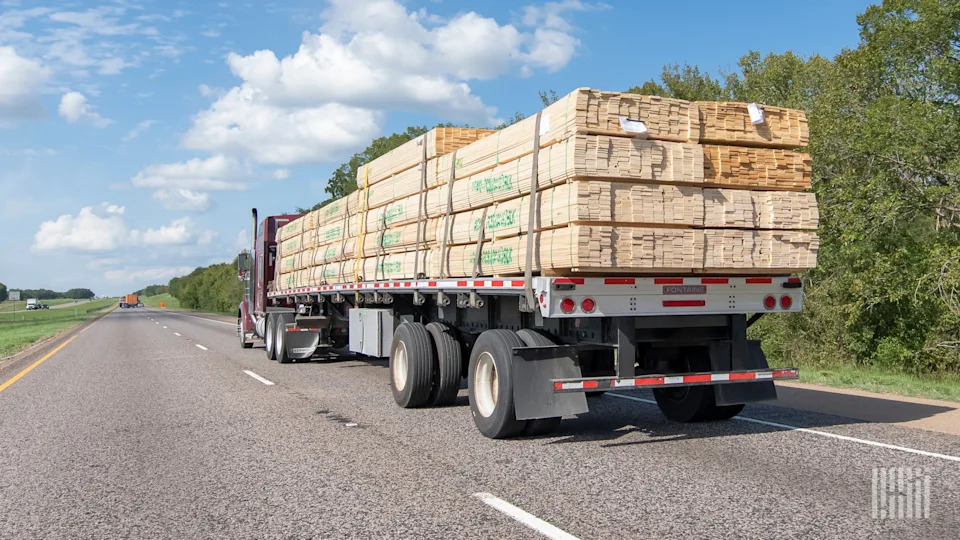
Tariffs spike flatbed tender rejections
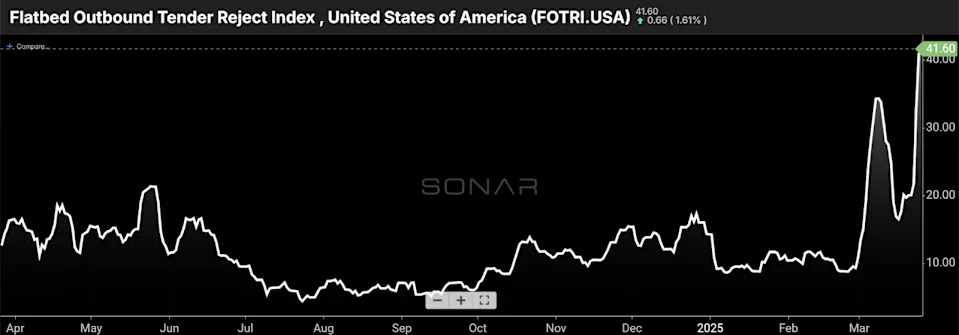
Flatbed tender rejection rates spiked just before North American tariffs took effect in early March, and they spiked again in recent days. (Chart: SONAR)
“What’s happening with flatbed rejection rates?” is the question of the hour from SONAR users. It’s easy to see why – rates shot up to the mid-30s in early March, ahead of North American tariffs (which were delayed for imports that adhered to the United States-Mexico-Canada Agreement). Flated rejection rates shot up again in recent days to a latest reading of 41.6%, ahead of additional North American tariffs set to go into effect on April 2 that may include lumber , among other things.
The SONAR team believes it’s all tariff-related.
When flatbed tender rejections spiked in early March, I dug into our raw flatbed data with help from our data team. The purpose was, first, to verify that we are, in fact, seeing that spike in the underlying data we are receiving from our data vendor – we are. Second, it was to see if there is evidence of tariffs driving the spike in rejection rates, as the timing suggests. Looking at the individual geographic markets for flatbed tender rejections (which SONAR does not publish) reveals that the spike in flatbed tender rejections is fairly widespread, with multiple markets in the U.S. showing more than one-third of the number of tender rejections we have historically seen, on average, for the U.S. as a whole. The two markets that have the highest total rejections are Dallas and Portland, Oregon. Presumably, movements to avoid tariffs are taking capacity that would normally be available in those areas.
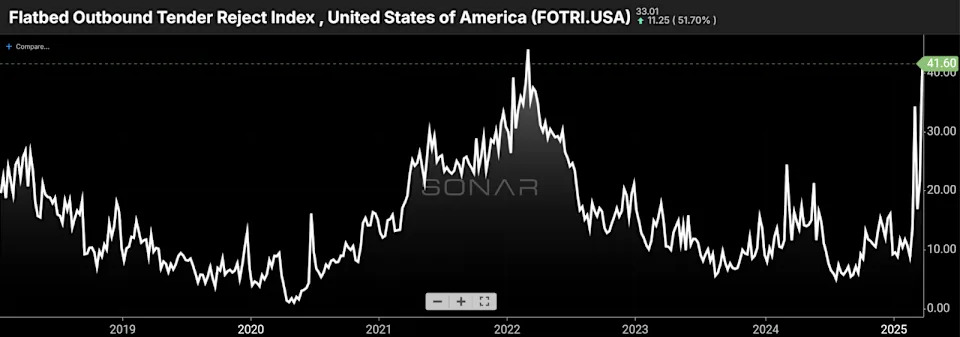
Since the SONAR Flatbed Outbound Tender Reject Index’s inception, February 2022 was the only other time the index was as high as current levels. (Chart: SONAR)
Another factor behind the magnitude of the surge in flatbed tender rejection rates is simply that it is a thin dataset, relative to other equipment types in SONAR, which makes it prone to sharp moves. Not only is there far less flatbed volume than dry van and reefer, it is more likely to move on the spot market, and therefore not go through the tender accept/reject process. According to a SONAR employee with experience brokering flatbed loads, “Generally, flatbed doesn’t move in any sort of contract manner. There are a few contract shippers scattered around the US, but most of that freight is intra-network and agreed upon in an all-in manner.”
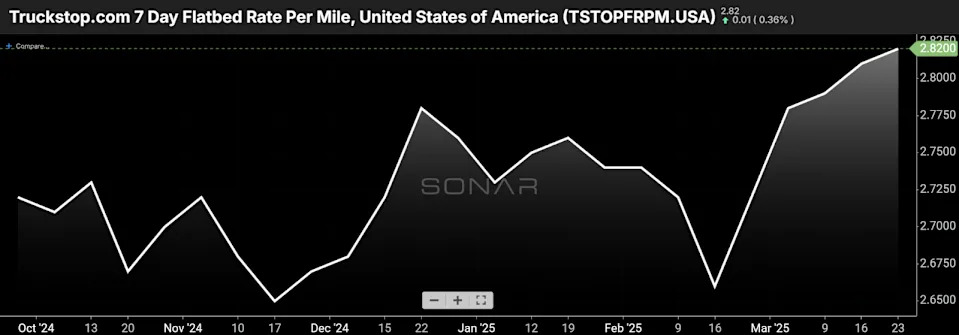
Truckstop spot rates have risen but not by as much as the spike in rejection rates would suggest. In addition to tariffs, spring is seasonally strong for flatbed as construction projects ramp up. (Chart: SONAR)
For more detail on the divergence between rejection rates and spot rates, and why rejection rates are typically a leading indicator for spot rates, see JP Hampstead’s latest article .
The Stockout x The Logistics of Logistics
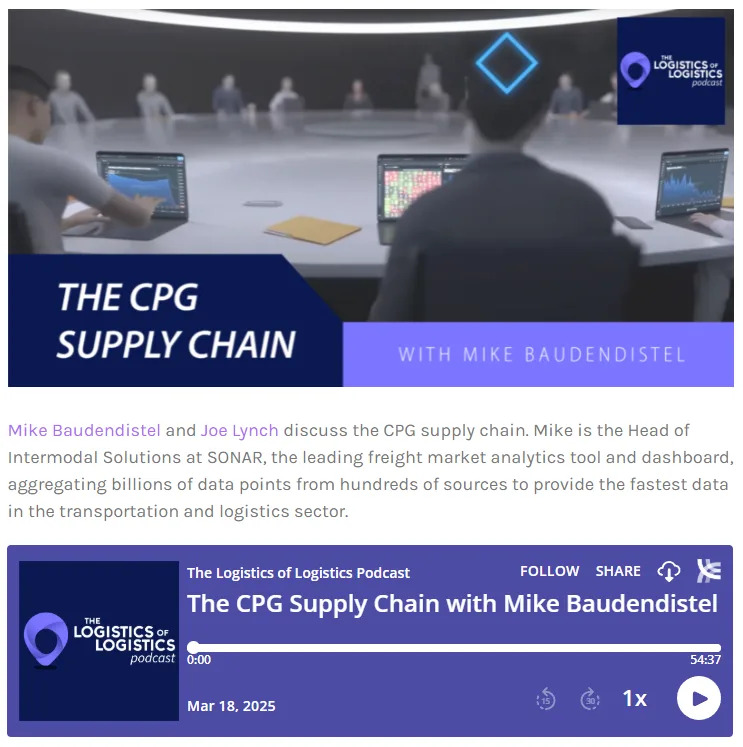
(Image: thelogisticsoflogistics.com)
Last week, I joined Joe Lynch’s The Logistics of Logistics podcast. Lynch is a prolific podcaster but had not had anyone on before to discuss consumer packaged goods supply chains specifically. CPG topics discussed included the impact of tariffs, ingredient inflation, Gen Z buying trends, health trends and how CPG companies are using AI. In addition, we discussed how CPG companies use SONAR for purposes of daily freight management, RFP management and logistics strategy.
Listen to the show here or on your podcast service of choice.
The Stockout Show: Walmart bolsters capabilities with 3PL division

(Image: FWTV)
On Monday’s The Stockout show, Grace Sharkey and I discussed Walmart getting into brokerage, as well as recent events involving FedEx, Forever 21 and the ocean market. Of those topics, Walmart’s actions have the most potential for industrywide impact and are part of a larger trend in which enterprise shippers are enhancing internal logistics capabilities.
In recent days, Walmart began emailing a select group of trucking companies about its new 3PL offering, which promises to provide carriers with steady freight flows largely from Walmart Fulfillment Services (WFS). Walmart’s ultimate goal appears to be developing a stronger WFS, a competitor to Amazon Marketplace. Amazon Marketplace has faced criticism for imposing fees and requirements that make it difficult for sellers to be profitable on the platform. That may entice sellers to move to WFS or use both platforms.The show is available on The Stockout YouTube page .
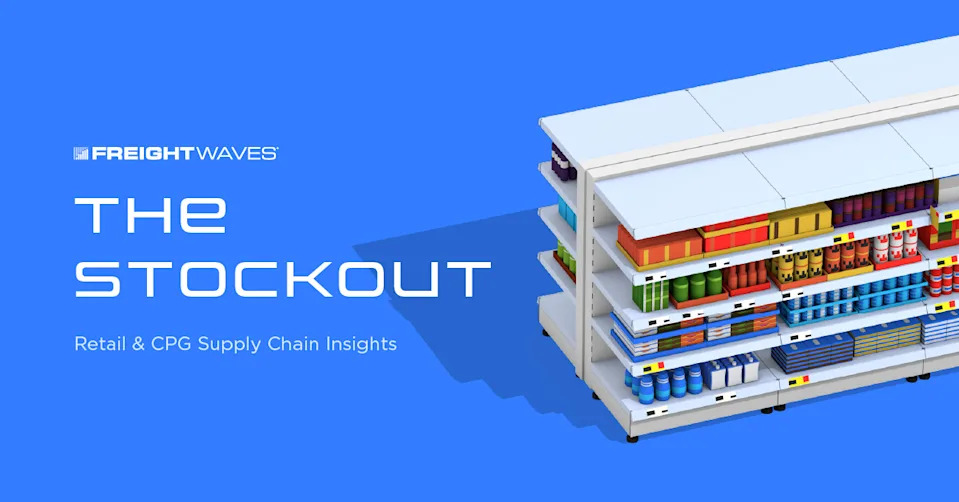
To subscribe to The Stockout, FreightWaves’ CPG and retail newsletter, click here .
The post Flatbed market anything but flat appeared first on FreightWaves .




